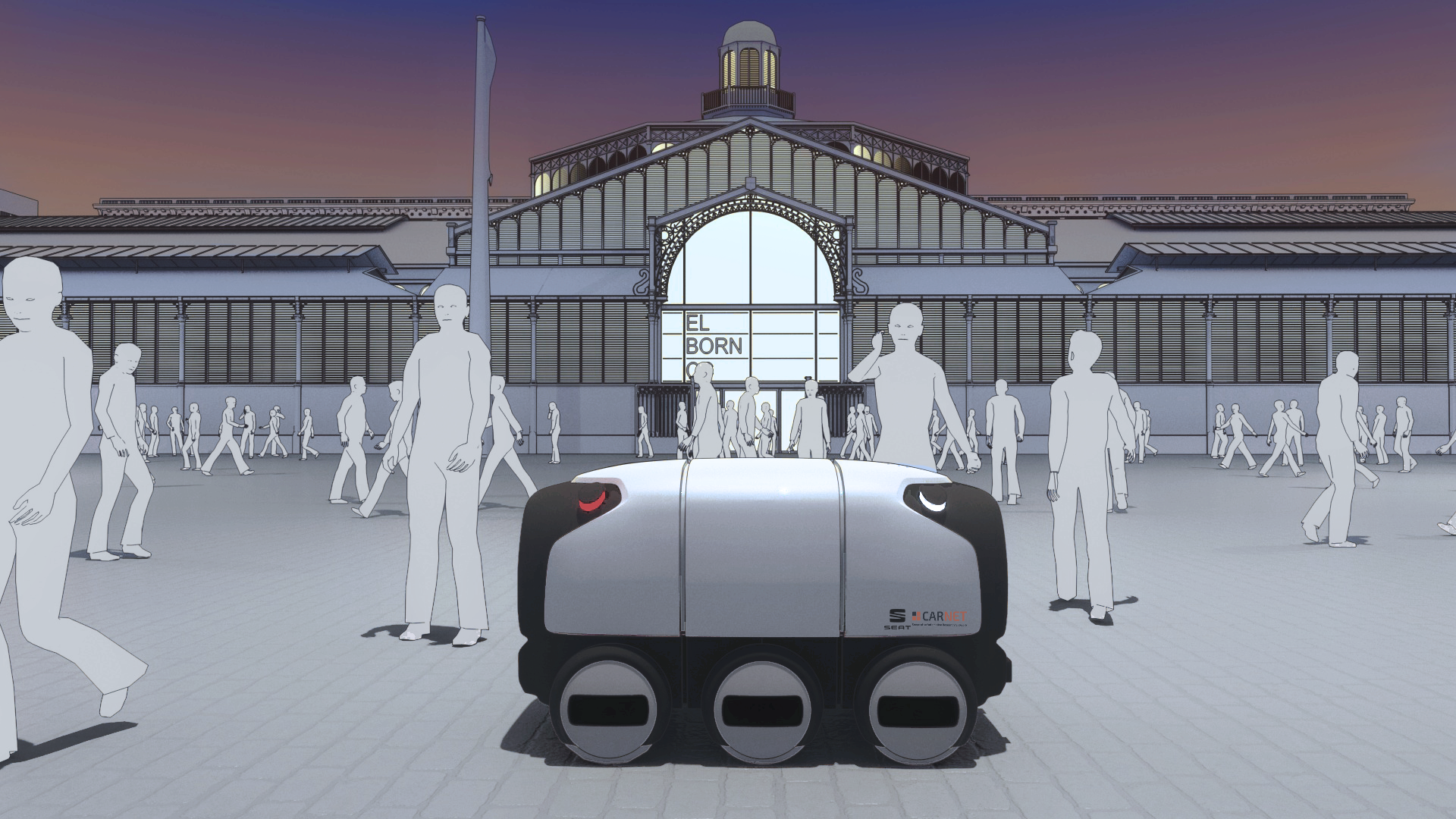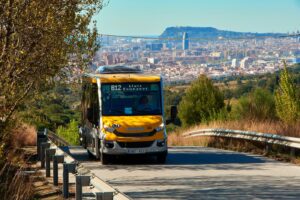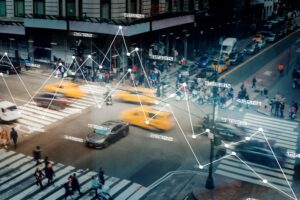
Virtual reproduction of the architectural evolution of the medieval complex of Palau Reial Major, Barcelona
January 3, 2020
Blockchain technology applied to urban mobility
January 4, 2020The automation of last-mile delivery will help cities to reduce the amount of space allocated for commercial vehicles to stop and park. In addition, it will optimise routes and their management, reduce costs, and lead to nocturnal operations of distribution companies, which will increase operational opportunities for the service and thus improve it.


The CARNET initiative, coordinated by the CIT UPC, has generated a small autonomous vehicle, called ADD, to carry out the last-mile delivery of goods. The vehicle can carry out its journey autonomously using a Lidar 3D system and laser technology that, together with a GPS, a stereo camera and HRI lamps, can model the environment, determine the route and react to obstacles. The vehicle also improves the mobility system overall by increasing safety in urban areas and reducing traffic and emissions:
- Their small size (1.2 m3) means that three of these vehicles can replace a van that measures 3–4 m3 or seven can replace a large lorry of 8–9 m3 for journeys from shops in urban areas to the final destination.
- Their autonomy means that the delivery times can be made more flexible to reduce the congestion that currently occurs at rush hour, caused by vehicles delivering goods to homes, among other factors. In addition, platoons can be created, that is, groups of ADD connected virtually over a short distance with the same destination, to optimise routes and times. Considering all these factors, the implementation of ADD could reduce by 70% the number of vans used to deliver goods, at the same service level as now.
- Given the reduction in the number of vans operating on urban streets to deliver goods, the introduction of ADD would reduce CO2 emissions in urban centres by 30%. This would be directly to the lower number of vans and to the reduction in congestion, as the autonomy of the ADD means that delivery times can be flexible, with more nocturnal deliveries and the corresponding reduction in impact on traffic in cities.
- The modularity of the ADD means that they are scalable, so thatfleets of ADD can be adapted to the needs of various operators.
This project not only aims to provide more efficient solutions to the distribution of goods by distributors, but also to respond to other challenges such as, for example, improving the distribution of drugs from pharmacies to the sick and to increase the accessibility of disadvantaged groups to medication.
This project uses all of the technology required for autonomous driving. The ADD generate virtual models of their environment to avoid potential obstacles and they are also connected to a general model of the mobility system of the urban centre so that their route can be optimised and the travel time reduced. Their autonomy also means that journeys can be programmed in advance. The technology represents progress towards automatization of all goods distribution processes.

Technology
Sector
You want to know more?
Related Projects
- The Barcelona Innovative Transportation (BIT), the Research Center in Automotive and Advanced Mobility (CER-AMA) and The Future Mobility Research Hub (CARNET) research groups from the Universitat Politècnica de Catalunya - BarcelonaTech (UPC) are participating in the E-MED project, which aims to optimise energy and resource efficiency in public transport systems by addressing energy price fluctuations through smart and participatory solutions across the Mediterranean region.
- A research team involving the Barcelona Innovative Transportation (BIT), inLab FIB, CARNET Barcelona – Future Mobility Research Hub (CER-AMA), and the Department of Computer Architecture (DAC) of the Universitat Politècnica de Catalunya - BarcelonaTech (UPC) is driving the i-MovE project, which aims to incorporate multisectoral data to provide much more accurate and valuable information for the mobility sector. The project develops four use cases focused on both companies and mobility authorities, covering public and individual transport, using the UPCxels demonstrator.
- The Research Center for Supervision, Safety and Automatic Control (CS2AC-UPC) at the Universitat Politècnica de Catalunya - BarcelonaTech (UPC) has coordinated the SaCoAV project, focused on researching new methods and tools to ensure the safe coordination of autonomous vehicles in urban environments.
- As part of the USEFUL project, the Centre for Sensor, Instrumentation and Systems Development (CD6) at the Universitat Politècnica de Catalunya - BarcelonaTech (UPC) has equipped a low-emission vehicle that will drive through the streets of Terrassa with optical sensors integrated into a complex system for data computing, visualisation, and storage. This car will collect and store thousands of anonymous driving data points, which will be used to develop more accurate algorithms for autonomous driving.




